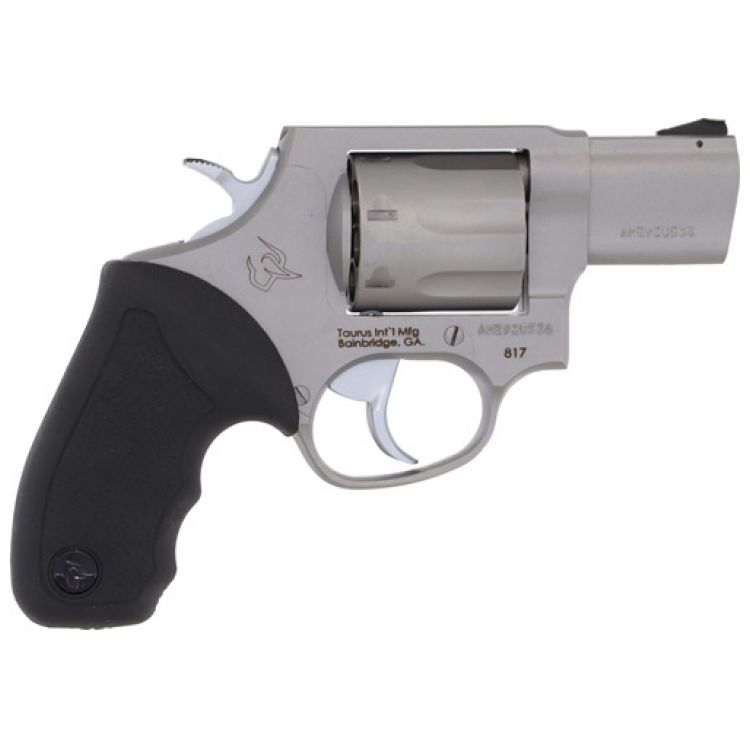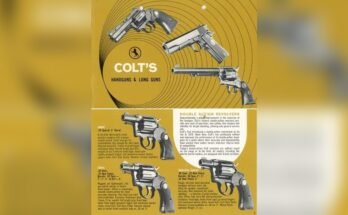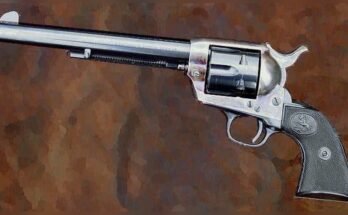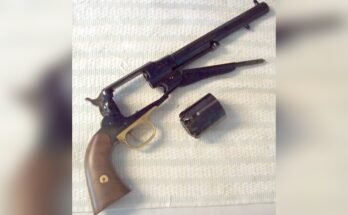Have you ever wondered what makes a fixed cylinder revolver tick? If you’re curious about how this classic firearm operates, you’re in the right place.
Understanding how a fixed cylinder revolver works can give you a deeper appreciation for its design and reliability. You’ll discover the simple yet clever mechanics behind it, explained clearly so you can easily follow along. By the end, you’ll see why this type of revolver remains a favorite for many shooters.
Keep reading—your curiosity is about to be rewarded!
Basic Structure
The basic structure of a fixed cylinder revolver is simple but effective. It has a few main parts that work together to fire bullets. Each part has a clear job. Understanding these parts helps you see how the revolver works.
These parts include the frame and barrel, the cylinder, and the trigger with the hammer. Each part fits together tightly. This design keeps the revolver strong and reliable.
Frame And Barrel
The frame is the main body of the revolver. It holds all the parts in place. The barrel is attached to the frame. It guides the bullet when fired. The frame and barrel must be strong to handle the force of shooting.
Cylinder Design
The cylinder is a round, rotating part. It holds the bullets in separate chambers. In a fixed cylinder revolver, the cylinder does not swing out. You load bullets from the front or through a loading gate. The cylinder turns each time you pull the trigger.
Trigger And Hammer
The trigger starts the firing process. Pulling the trigger moves the hammer back. The hammer then snaps forward to strike the firing pin. This action ignites the bullet’s primer and fires the shot. The trigger and hammer work together smoothly.

Cylinder Mechanics
The cylinder is the heart of a fixed cylinder revolver. It holds the bullets and turns to align each one with the barrel. Understanding how this part works helps explain the revolver’s operation.
Every time the trigger is pulled or the hammer is cocked, the cylinder moves. This movement must be smooth and precise. The mechanics inside the cylinder ensure the revolver fires safely and correctly.
Rotating Mechanism
The cylinder rotates on a central axis. This rotation brings each bullet chamber in line with the barrel. A pawl or hand pushes the cylinder to move it one step at a time. This action happens quickly and with exact timing.
Locking System
The locking system holds the cylinder in place when firing. It stops the cylinder from moving and keeps the chamber aligned. This lock prevents misfires and ensures safety. A bolt or latch usually locks the cylinder firmly.
Chamber Alignment
Chambers must line up perfectly with the barrel. This alignment allows the bullet to travel straight and true. The revolver’s frame and cylinder work together to keep this precision. Even a small misalignment can affect accuracy and safety.
Firing Sequence
The firing sequence in a fixed cylinder revolver is a smooth process. Each step works together to fire a bullet safely and reliably. Understanding this sequence helps appreciate the revolver’s design.
Trigger Pull Action
The sequence starts with the trigger pull. Pulling the trigger rotates the cylinder. This action lines up the next chamber with the barrel. The trigger also cocks the hammer in some revolvers. This movement prepares the gun to fire.
Hammer Strike
After the cylinder moves, the hammer is released. The hammer swings forward quickly. It strikes the firing pin or primer directly. This strike is strong enough to ignite the bullet’s primer. The hammer’s motion is key to firing.
Ignition And Bullet Discharge
The hammer strike ignites the primer inside the cartridge. This ignition creates a small explosion. The explosion pushes the bullet down the barrel. The bullet leaves the barrel at high speed. The whole process happens in a fraction of a second.

Reloading Process
The reloading process of a fixed cylinder revolver is simple and direct. It involves three main steps to prepare the firearm for the next use. Each step ensures safety and efficiency. Understanding this process helps users reload quickly and correctly.
Opening The Cylinder
Start by unlocking the cylinder. Most fixed cylinder revolvers have a latch or a pin to release it. Pull or push the release to swing the cylinder out. This exposes the chambers for unloading and loading. Keep the gun pointed in a safe direction while doing this.
Ejecting Spent Casings
Once the cylinder is open, remove the empty shells. Use the ejector rod located under the barrel. Push the rod to push out the spent casings from each chamber. Remove all casings before loading fresh cartridges. This step clears the chambers for new rounds.
Loading Fresh Cartridges
Insert fresh cartridges into the empty chambers one by one. Press each cartridge fully into place. Make sure all chambers are loaded correctly. After loading, swing the cylinder back into the frame. Lock it firmly to secure the cartridges. The revolver is now ready to fire again.
Safety Features
Safety features are essential in fixed cylinder revolvers. They help prevent accidental firing. These features ensure the gun only fires when intended. Understanding these parts can increase safe handling.
Hammer Block
The hammer block stops the hammer from hitting the firing pin unless the trigger is pulled. It sits between the hammer and the firing pin. This block moves out of the way only during a proper trigger pull. It keeps the revolver safe from accidental strikes or drops.
Transfer Bar
The transfer bar acts as a safety barrier. It only appears between the hammer and firing pin when the trigger is pulled fully. This bar carries the hammer’s energy to the firing pin. Without the trigger being pulled, the hammer cannot hit the pin directly.
Cylinder Stop
The cylinder stop locks the cylinder in place during firing. It prevents the cylinder from rotating at the wrong time. This locking keeps the chamber aligned with the barrel. It ensures the bullet fires safely and accurately.

Common Uses And Advantages
Fixed cylinder revolvers have many uses and clear advantages. Their simple design makes them popular for various tasks. Many people rely on them for personal defense, hunting, and sport shooting. Their strength and easy use add to their appeal.
These revolvers work well in tough conditions. They need little care and last long. Their reliability and simplicity make them a trusted choice.
Reliability In Various Conditions
Fixed cylinder revolvers perform well in harsh environments. Dirt, dust, and moisture rarely affect their function. The solid cylinder keeps bullets secure and aligned. This reliability makes them useful for outdoor activities. Many users trust them for emergency situations.
Ease Of Maintenance
Maintaining a fixed cylinder revolver is simple. Few moving parts mean fewer things can break. Cleaning the cylinder and barrel is quick and easy. Regular care keeps the revolver working smoothly. This low maintenance suits beginners and experts alike.
Design Simplicity
The fixed cylinder design is straightforward. It has a solid frame and no complex mechanisms. This simplicity helps users learn how to operate it fast. The design also reduces the chance of mechanical failure. It gives confidence to those using the revolver.
Frequently Asked Questions
What Is A Fixed Cylinder Revolver?
A fixed cylinder revolver has a non-swinging cylinder attached to the frame. It requires manual loading and unloading through a loading gate. This design is simple and reliable, commonly found in older revolver models.
How Does The Fixed Cylinder Rotate?
The fixed cylinder rotates manually by cocking the hammer or pulling the trigger. This action aligns a new chamber with the barrel, readying the revolver to fire. The cylinder rotation is controlled by the revolver’s internal mechanism.
What Are The Advantages Of Fixed Cylinder Revolvers?
Fixed cylinder revolvers offer durability and fewer moving parts, reducing mechanical failures. Their solid frame provides better alignment for accuracy. They are easier to maintain, making them popular among traditional firearm enthusiasts.
How Do You Load A Fixed Cylinder Revolver?
You load a fixed cylinder revolver by opening the loading gate on the side. Insert rounds into each chamber manually, then close the gate. This process ensures each chamber is securely loaded before firing.
Conclusion
A fixed cylinder revolver holds all rounds in one place. You load bullets into the cylinder before firing. Each shot turns the cylinder to the next round. The hammer strikes the bullet, causing it to fire. This design is simple and reliable for many users.
Understanding how it works helps appreciate its classic use. A fixed cylinder revolver stays popular for its ease and safety. Simple mechanics make it a good choice for beginners and experts.



